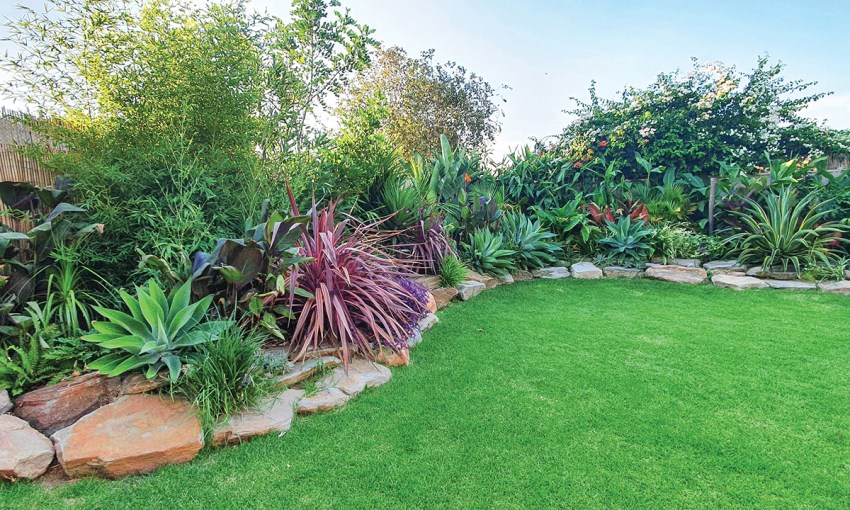Even if you aren’t able to jet off to exotic climes at the moment, you can always create your own tropical paradise, right outside your back door.
How to plant a holiday garden
Need a holiday? One of those idyllic tropical getaways – palm trees swaying in a warm, gentle breeze, the sound of water splashing in some remote, lush, green jungle, as you relax and think happy thoughts?
It may not be easy to travel to your dream destination at the moment, so why not create your very own holiday garden in your back yard. With a little bit of planning and preparation, it’s possible to own a piece of paradise that the whole family can enjoy year-round.
First, you need to have an idea of the kind of “holiday” you want. Scroll through social media, flick through magazines and even take photos of gardens and plants you like. By keeping a digital or physical scrapbook, you can build up a solid picture of the style of garden you want.
Then work out the area you want to transform, draw a mud map and begin to put your ideas on paper.
You will also need to prepare the site; correct soil preparation is the key to a successful garden. The majority of plants like a well-drained soil, rich in organic matter such as mushroom compost and cow manure.
The addition of an organic, slow-release fertiliser will do wonders too. Do this before you plant anything so that the worms and microorganisms can do their stuff to help your plants prosper.
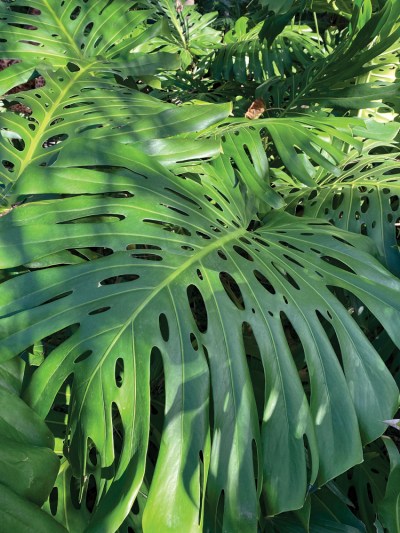
The perfect holiday garden creates a feeling of seclusion and being far removed from your everyday life. It should be fun and inviting, maybe even exciting. Think about including a structure of some kind, a Bali hut or a gazebo to give the garden a focal point and make a useful area to relax or entertain.
You could even incorporate a paved area that has a fire pit, so you can “holiday” year-round. Maybe you are lucky enough to have a swimming pool, so you can build your resort-style garden around this. Even a small water feature sets the atmosphere both with looks and sound.
Next, consider screening plants that will hide unattractive objects, such as sheds or rainwater tanks, or give you privacy from the neighbours.
Clumping bamboo is an obvious choice. It’s non-invasive, great for narrow spots or large troughs in sun or shade and fast growing so it creates a lush, private haven in a very short space of time.
Other excellent screening plants are syzygium (lilly pilly) Murraya paniculata (orange jessamine), or cottonwoods.
Cottonwoods are a particular favourite because of their big, red, heart-shaped new leaves that turn a deep, glossy green. They can be used as a fabulous screening plant by giving the occasional hard prune and evoke a real tropical feel. They are also excellent in pots.
Now that we have privacy from screening plant selections and structures to create focal points and entertaining areas, it’s time to think about the planting of the garden.
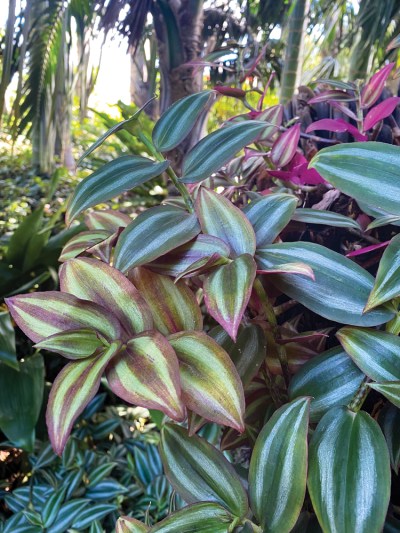
If you look at the plants in a beautiful, tropical garden you will notice a few things:
Big, bold, colourful plants with lush green leaves, different textures and shapes, and varying heights.
Although it’s usually not possible to have exactly the same tropical plants that you saw on your last holiday to Seminyak or Port Douglas, there is always an alternative that will suit the climate of South Australia.
Firstly, place the taller accent plants. These give the garden structure and height. Great plants to use are palms or one or two trees.
Bangalow or Alexandra palms are a good choice. Given a little shade for the first couple of years’ heatwaves, they will grow up to give a real tropical feel.
Golden cane palms are another good choice if you have a protected, sunny spot. Dwarf date palms are a great choice as a smaller palm and are used as an under-planting to their taller cousins or in pots.
Palms are also a good idea near pools because they make minimal mess. If you have a larger space to fill, choosing a jacaranda or Persian silk tree will create a brilliant backdrop.
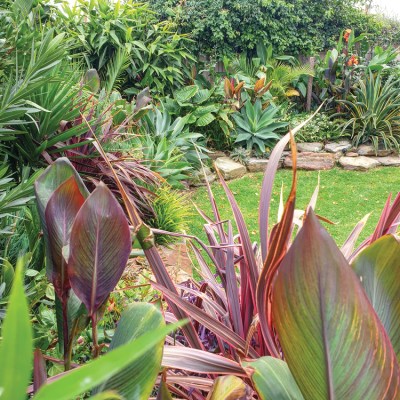
Cordylines are another great choice. The taller varieties such as Red Star or Black Knight make real impact with their colourful foliage and narrow growth habit.
Giant bird of paradise is another tough plant and useful in a tropical garden because of its big, glossy leaves. Just be careful where you plant it though, it is ultimately a big plant, so not near pools or fences. They are excellent in pots however.
For perfume and those gorgeous creamy, white flowers there is the frangipani. A large specimen can be a real feature, just remember they are slow growers, like excellent drainage and prefer to be planted against a fence or structure where the reflected warmth will give it protection in the winter.
Now the fun bit is planting the understorey. My advice is to choose four or five different species and keep repeating these plants all through the garden. Also, plant in odd-numbered clumps for a more natural look.
Think about foliage colour, shape and height. Preferably, they should all be different to create interest and a verdant effect.
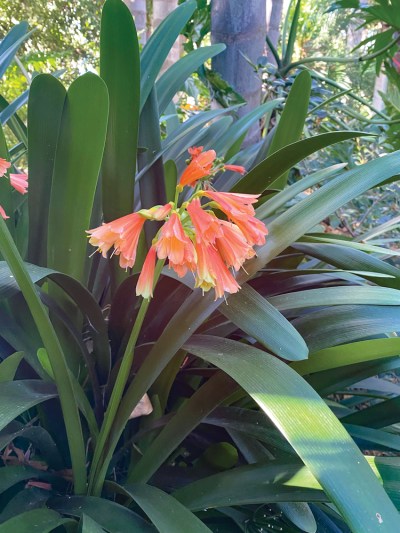
In full sun, the following plants would be ideal:
• Dracaena marginata
• bougainvillea
• Cycad revoluta
• agave
• Strelitzia reginae
• cyperus
• cordylines
• cannas
In areas where there is afternoon shade or dappled sun, you could grow:
• ornamental gingers
• clivia
• bromelliads
• alocasia
• Acanthus mollis
• Monstera deliciosa
• Philodendron selloum or xanadu
Arthropodium (NZ Rock lily) and ferns will all thrive in a shaded position.
There are of course many more species that would be suitable and your local garden centre will be able to help you choose.
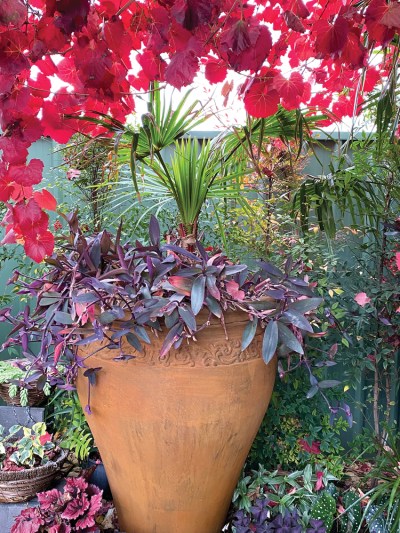
Lastly, for edging paths or filling in spaces use groundcovers or clumping plants such as tradescantia, liriope, heuchera and aspidistra. Remember, you are trying to create a tropical oasis, so plant thickly.
Once the planting is finished it is imperative you lay a thick mulch (10 to 15cm deep) throughout the garden to retain moisture and keep the soil temperature even. Also keep regular watering in mind (you want a lush holiday garden) and fertilising to keep the plants healthy. A top-dress twice a year with compost will also be beneficial.
Now all the hard work’s been done, it’s time to enjoy your private tropical resort right outside your back door.
This article first appeared in the Spring 2021 issue of SALIFE Gardens & Outdoor Living magazine.
including free delivery to your door.



